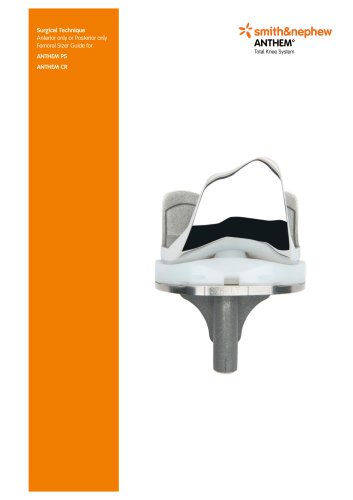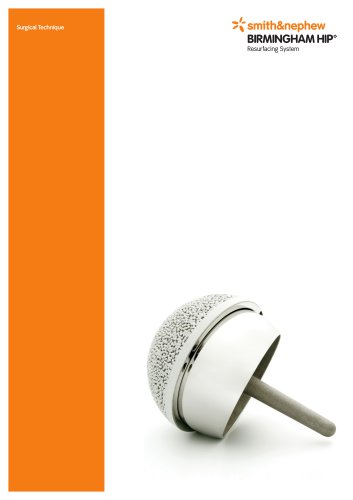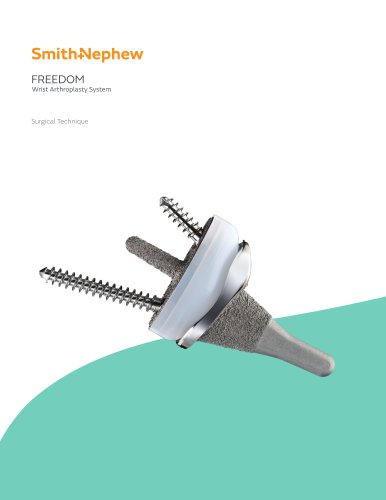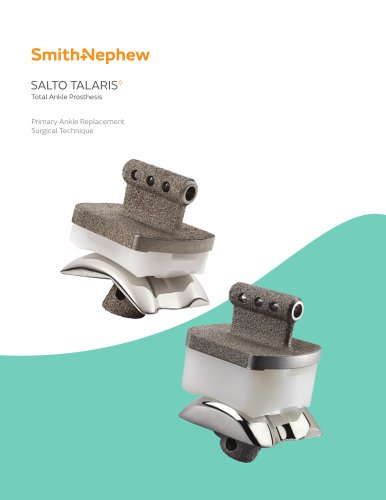
Catalog excerpts

RAPID RHINO™ NASASTENT™ Introducing a structural nasal dressing designed to completely dissolve, not fragment Trimmable and resilient for ease of placement, with no special storage conditions required Dissolvable Nasal Dressin
Open the catalog to page 1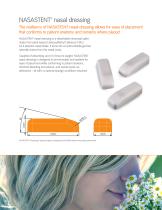
NASASTENT™ nasal dressing The resiliency of NASASTENT nasal dressing allows for ease of placement that conforms to patient anatomy and remains where placed. NASASTENT nasal dressing is a dissolvable intranasal splint made from plant-based CarboxyMethyl Cellulose (CMC). As it absorbs nasal fluids, it turns into a hydrocolloidal gel that naturally drains from the nasal cavity. Capable of absorbing up to 16 times its weight, NASASTENT nasal dressing is designed to be trimmable and resilient for ease of placement while conforming to patient anatomy, minimize bleeding and edema, and prevent...
Open the catalog to page 2
Resilience comparison of NASASTENT™ dressing to Nasopore Firm dressing During placement into the nasal cavity, NASASTENT nasal dressing quickly springs back to recover its form and has a compressive strength six times higher than Nasopore Firm.1 The resilience of NASASTENT nasal dressing allows it to immediately conform to patient anatomy, possess sufficient strength to help control bleeding via the tamponade effect, and can exert sufficient tissue separation force on nasal structures (such as the middle turbinate) to keep them in the desired location. Location Device NASASTENT nasal...
Open the catalog to page 3
Turbinate support load Instranasal splints need to provide sufficient support to tissue compromised by surgery and/or trauma, such as to prevent the lateralization of the middle turbinate.1 Tissue separation force (N) NASASTENT nasal dressing Nasopore Firm Nasopore Firm Double-Fold (2) 8 9 Simulated nasal cavity gap (mm) Tissue Separation Force of NASASTENT nasal dressing and Nasopore Firm after being placed in simulated nasal cavity gaps ranging from 7 to 10mm. NASASTENT nasal dressing provides significantly higher separation forces compared to Nasopore Firm over all nasal cavity gap sizes...
Open the catalog to page 4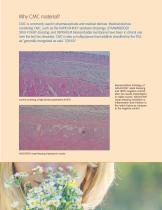
Why CMC material? CMC is commonly used in pharmaceuticals and medical devices. Medical devices containing CMC, such as the RAPID RHINO™ epistaxis dressings, STAMMBERGER SINU-FOAM™ dressing, and SEPRAFILM bioresorbable membrane have been in clinical use over the last two decades. CMC is also a multipurpose food additive classified by the FDA as “generally recognized as safe.” (GRAS)2 Control consisting of high density polyethylene (HDPE) NASASTENT nasal dressing implanted in muscle Representative histology of NASASTENT nasal dressing and HDPE (negative control) after two weeks implantation...
Open the catalog to page 5
Betre, Helawe and Delli-Santi, George. Performance Comparison of Nasal Dressings: Dissolvable NASASTENT™ vs. Fragmentable Nasopore Firm. Smith & Nephew. August 2014. 2. Cooper, Monica. CMC Considerations for 505(b)(2) Applications. FDA/CDER/OPS/ ONDQA AAPS Annual Meeting Washington, D.C. October 2011. Retreived from: http://www.accessdata.fda.gov/scripts/cdrh/cfdocs/cfcfr/CFRSeach.cfm?fr=182.1745 3. Valentine R, Wormald W, Sindwani R. Advances in Absorbable Biomaterials and Nasal Packing. Otolaryngology Clin N Am 2009; 42(5):813-828 4. Cowin A, McIntosh D, Wormald P. Healing of wounds...
Open the catalog to page 6All Smith & Nephew catalogs and technical brochures
-
ANTHEM
40 Pages
-
BIRMINGHAM HIP
32 Pages
-
FREEDOM
16 Pages
-
SALTO TALARIS
48 Pages
-
polarstem
28 Pages
Archived catalogs
-
Locking Large Fragment Overview
32 Pages
-
Locking Small Fragment Overview
68 Pages
-
Rediscover normal
4 Pages
-
TWINFIX ULTRA HA and PK
2 Pages
-
TRIGEN™ INTERTAN
12 Pages
-
EVOS SMALL Resources
12 Pages
-
NAVIO Message Brochure
8 Pages
-
Small footprint, big impact
8 Pages
-
TAYLOR SPATIAL FRAME◊
8 Pages
-
Recertification Program
8 Pages
-
anthem
4 Pages
-
Ordering information
1 Pages
-
BST-CarGel ®
20 Pages
-
clancy anatomic cruiciate
2 Pages
-
Electrosurgery
20 Pages
-
Powered Instruments
11 Pages
-
Shaver Systems
7 Pages
-
Knee
73 Pages
-
HIP
21 Pages


